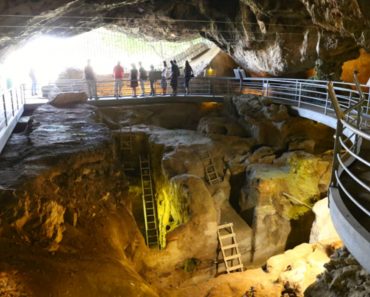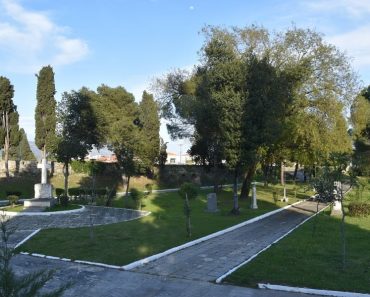During Lord Byron’s idealistic romp around Greece in the early 1820s, he stopped off at Ithaca, where the islanders showed him the ruins of an ancient site guaranteed to get a poet’s pulse racing: the School of Homer, as locals called it.
Carved out of a rocky formation high up on the northern part of the island, local lore dictated that the site had once been a shrine to Odysseus, the Ithacan hero of Homer’s epic poem The Odyssey. Such claims have led to a string of excavations over the past century and a half, beginning in the 1870s with Heinrich Schliemann (the Prussian amateur archaeologist who “found” and nearly destroyed Troy) and continuing to the present day.
Now, legend has become reality. Archaeologists from the University of Ioannina announced that their nearly two decade-long excavations have produced concrete proof that the School of Homer at the site of Agios Athanasios was indeed a site where the Trojan War hero was worshipped.
“Our recent research is based on a re-examination of vast quantities of finds from our excavations,” Yannos Lolos, a lead archaeologist from University of Ioannina, said over email. “We have found new and strong inscriptional evidence that identifies the monumental complex as a public sanctuary for the worship of Odysseus in Hellenistic and early Roman times.”

Fragment of a tile from the Hellenistic period with the name of Odysseus. Photo: courtesy Greek Ministry of Culture.
This evidence consists of a small bronze bust of Odysseus dating to the Roman period (1st or 2nd century C.E.) and a pilgrim’s roof tile fragment from the late Hellenistic period inscribed with the dedication “to Odysseus.” More important, Lolos said, is a second roof tile, this one stamped with the name of the Ithacan in the Greek genitive case, i.e. Odysseus’s, which acknowledges the place as belonging to Odysseus. Archaeologists believe formal cultic activities related to Odysseus began at the end of 4th century B.C.E., around 500 years after the creation of The Odyssey and roughly a thousand years after the Ithacan king is said to have made his fabled homeward across the Mediterranean.

The site of the School of Homer in Ithaca where the sanctuary of Odysseus was found. Photo: courtesy Greek Ministry of Culture.
The complex in which the shrine to Odysseus existed was built out of a huge natural rock formation. It features a tower, a large oblong building, and a range of structures laid out in two main terraces that feature rock-cut architecture characteristic of the region and period. Archaeologists believe the complex had a long history and may have been part of a network of sites in northern Ithaca during the 13th and 14th centuries B.C.E. with the Agios Athanasios location serving to oversee nearby ports and manage water resources. This timeline is based on numerous pottery fragments and the dating of a lower level structure built around an underground spring.
The presence of the cult of Odysseus on Ithaca has never been in question. Coins minted by the city state in the 3rd century B.C.E. bear his beaded head and bronze cauldrons discovered in a sea cave mimic offerings given to the hero in The Odyssey. Now, however, archaeologists have pinpointed the practice’s epicenter.







